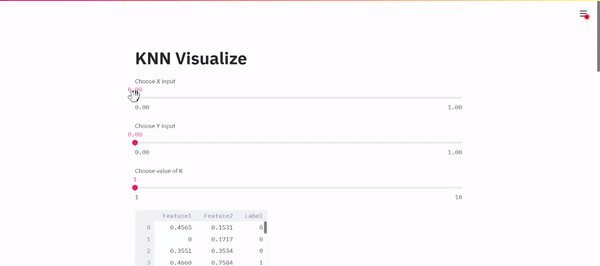KNN overview
KNN or K Nearest Neighbour is used for classification and regression. In this tutorial, we will be using it for classification. Since the target label is known, it is a Supervised algorithm. It essentially takes an input and finds the K nearest points to it. It then checks the labels of the nearest points and classifies the input as the label which occurred the most. Say we want to build a model to classify an animal as a dog or a cat based on the weight, height as input. If K = 3, we find the 3 nearest points to our input and check their label. If 2 of the 3 nearest points have a label ‘dog’, our model classifies the input as ‘dog’. If 2 of the 3 nearest points have a label ‘cat’, our model will classify the input as ‘cat’
Steps
- Normalize the dataset and store it, i.e make sure all values are between 0 and 1.
- Take an input data point and find the distance from all the records in our dataset. Store the distances in a list.
- Sort the list containing the distances and check the labels for the first K records in the sorted list
- Classify the input as the label which occurred the most in the first K records
First, we will create all the helper functions we will need. Then we will combine them and add some streamlit functions to build a web app.
For ease of understanding and visualization, we will be working with a dataset that has 2 features and has binary labels, i.e ‘0’ and ‘1’.
Helper Functions
Function to Normalize Data
To normalize a list of values, we iterate over each value and find the difference between the value and minimum value in the list. We then divide it by the difference of maximum and minimum values in the list.

The equation to Normalize Data
def min_max_normalize(lst):
minimum = min(lst)
maximum = max(lst)
normalized = [(val - minimum)/(maximum - minimum) for val in
lst]
return normalized
The function takes in a list of values and returns the normalized values
#machine-learning #streamlit #data-science #python #knn
